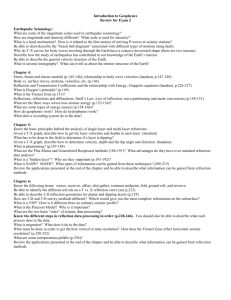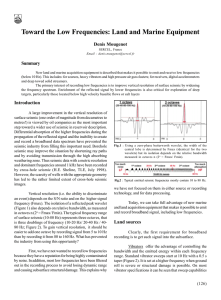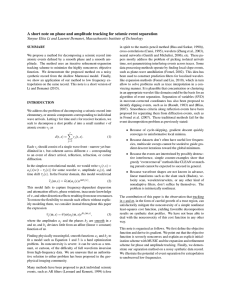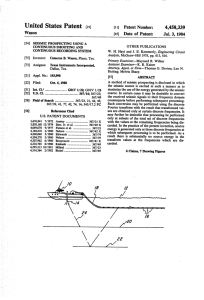Notes - LSU Geology & Geophysics
advertisement
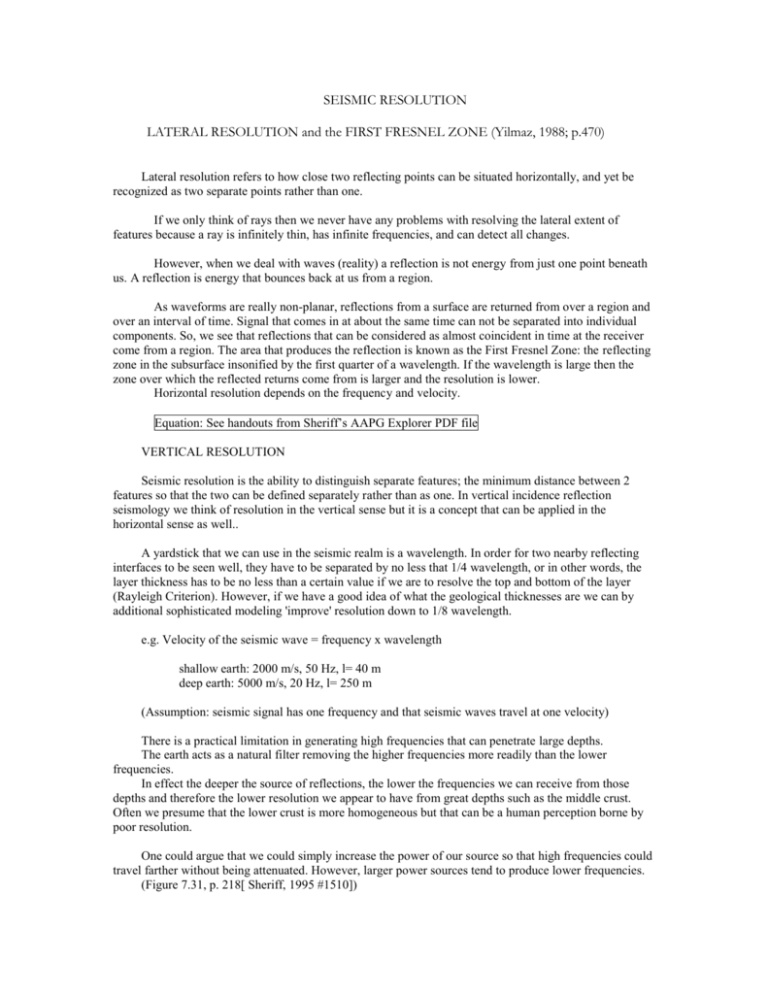
SEISMIC RESOLUTION LATERAL RESOLUTION and the FIRST FRESNEL ZONE (Yilmaz, 1988; p.470) Lateral resolution refers to how close two reflecting points can be situated horizontally, and yet be recognized as two separate points rather than one. If we only think of rays then we never have any problems with resolving the lateral extent of features because a ray is infinitely thin, has infinite frequencies, and can detect all changes. However, when we deal with waves (reality) a reflection is not energy from just one point beneath us. A reflection is energy that bounces back at us from a region. As waveforms are really non-planar, reflections from a surface are returned from over a region and over an interval of time. Signal that comes in at about the same time can not be separated into individual components. So, we see that reflections that can be considered as almost coincident in time at the receiver come from a region. The area that produces the reflection is known as the First Fresnel Zone: the reflecting zone in the subsurface insonified by the first quarter of a wavelength. If the wavelength is large then the zone over which the reflected returns come from is larger and the resolution is lower. Horizontal resolution depends on the frequency and velocity. Equation: See handouts from Sheriff’s AAPG Explorer PDF file VERTICAL RESOLUTION Seismic resolution is the ability to distinguish separate features; the minimum distance between 2 features so that the two can be defined separately rather than as one. In vertical incidence reflection seismology we think of resolution in the vertical sense but it is a concept that can be applied in the horizontal sense as well.. A yardstick that we can use in the seismic realm is a wavelength. In order for two nearby reflecting interfaces to be seen well, they have to be separated by no less that 1/4 wavelength, or in other words, the layer thickness has to be no less than a certain value if we are to resolve the top and bottom of the layer (Rayleigh Criterion). However, if we have a good idea of what the geological thicknesses are we can by additional sophisticated modeling 'improve' resolution down to 1/8 wavelength. e.g. Velocity of the seismic wave = frequency x wavelength shallow earth: 2000 m/s, 50 Hz, l= 40 m deep earth: 5000 m/s, 20 Hz, l= 250 m (Assumption: seismic signal has one frequency and that seismic waves travel at one velocity) There is a practical limitation in generating high frequencies that can penetrate large depths. The earth acts as a natural filter removing the higher frequencies more readily than the lower frequencies. In effect the deeper the source of reflections, the lower the frequencies we can receive from those depths and therefore the lower resolution we appear to have from great depths such as the middle crust. Often we presume that the lower crust is more homogeneous but that can be a human perception borne by poor resolution. One could argue that we could simply increase the power of our source so that high frequencies could travel farther without being attenuated. However, larger power sources tend to produce lower frequencies. (Figure 7.31, p. 218[ Sheriff, 1995 #1510]) Vertical resolution decreases with the distance traveled (hence depth) by the ray because attenuation robs the signal of the higher frequency components more readily.
